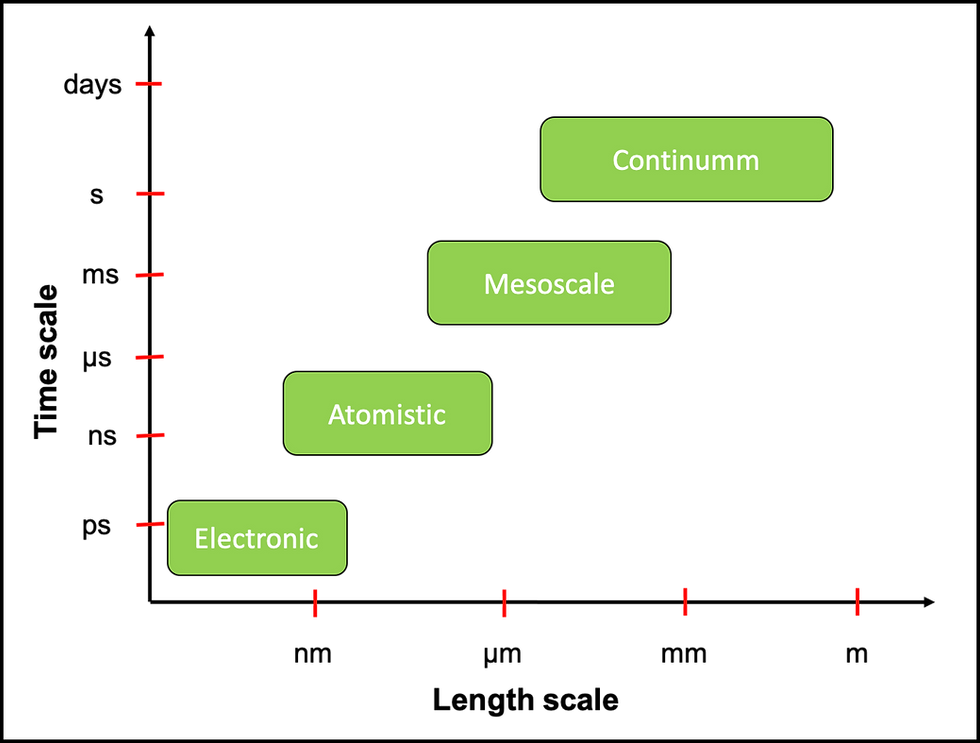Role of Computational Methods in Modern Chemistry (Part 1)
- Ankita Jadon

- Mar 15, 2020
- 3 min read
Computational methods in chemistry is really a subject which is interdisciplinary and brings together physics, chemistry, mathematics, and computer science, all under one umbrella. The topic is as old as the fundamental laws of physics. Computations in chemistry are not new. Chemists have been doing computations for years or rather centuries. In late 1990s, when Walter Kohn and John Pople formulated computational methods in quantum chemistry through their work on density functional theory (DFT), a new field of computational chemistry was born. Exciting, right? Mathematical and computational algorithms, statistics, and large databases are used to combine DFT with experimental measurements. Some exploration areas addressed by computational chemistry are:
Reactivity modelling
Fundamental physical processes behind phenomena such as charge storage, pseudocapacitance, corrosion, phase changes etc.
Modelling a complex system consisting of hundreds of atoms, molecules, and ions
Chemists use high performance computing environments to simulate processes which requires massive amounts of data. Some tools are: electronic structure methods, molecular dynamics, cluster calculations.

A widely used package which uses DFT at its core is Vienna ab initio simulation package (VASP). What VASP does is, it approximates solution to the many body Schrodinger equation, computationally. It solves the Kohn-Sham equations iteratively. Depending on the level of accuracy the user wants, it solves the Kohn Sham equations with the Hartree-Fock (HF) approximation. Several functionals are available to combine the HF approach and DFT. Moreover, depending on what you want to do, Green’s functions methods and many-body perturbation theory can be used by VASP.
Let’s understand what I said above by a practical example. We all have seen non-galvanised iron, turn brown. What really happens is: when iron reacts with oxygen and water (which is present in ambient atmosphere, if you’re on earth or similar oxygen-rich places). The oxidised iron brings the brown colour, chemically Fe2O3.xH20. Now, if I want to have a deeper understanding of this phenomena and answer a few questions like:
What concentration of oxygen and water is needed to complete this oxidation reaction?
Is the process reversible?
What is the impact of other gases which are also present in the atmosphere?
Is the bulk of the metal turning brown? If yes, what is the depth?
One way to answer these questions is to:
Design an experiment setup
Buy probes to measure oxygen/water concentration
Probes to perform in-depth diagnostics
Other sophisticated instruments to analysis the nature of oxidised material (rust) on the surface, like X-ray photoelectron spectroscopy.
Perform experiments in a controlled environment.
And finally perform enough experiments to be sure, then, model this physical process using kinetic equations in order to extrapolate your results.
However, another way of answering those question is through modelling. The process of rusting can be modelled using mathematical equations and solving them for answers. There are several advantages of modelling, in our case, the most important advantage would be: we can have much more quantitative information about our system in decent time. Let’s imagine I want to study the effect of temperature (10°C, 20°C, 30°C, 40°C, and 100°C) and humidity (5% RH, 10%RH, 20%RH, 30%RH, 40%RH, and 100%RH) on rusting. I will have to perform 25 different experiments for my study. That’s way too many! Imagine adding other levels of complexity, such as, presence of traces of other gases, effect of pressure etc.
Now imagine, if I am not interested in studying rusting but something more challenging; like radioactivity or studying precious elements like gold or platinum. Performing experiments to study radioactivity will require security clearances in addition to high financial investment. Thus, computational theories and methods are more practical to use.
Most physical processes can be mathematically modelled if we pay enough attention to understand them.
Stay tuned for the next article where I will show you how can we model rusting phenomena and how computational methods can be applied to solve them.
For further reading:
Map of chemistry: https://www.youtube.com/watch?v=P3RXtoYCW4M
Computational methods: http://www.ch.ic.ac.uk/motm/porphyrins/Comput.html





Comments